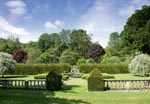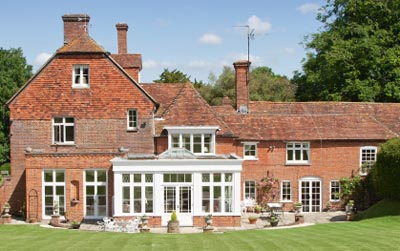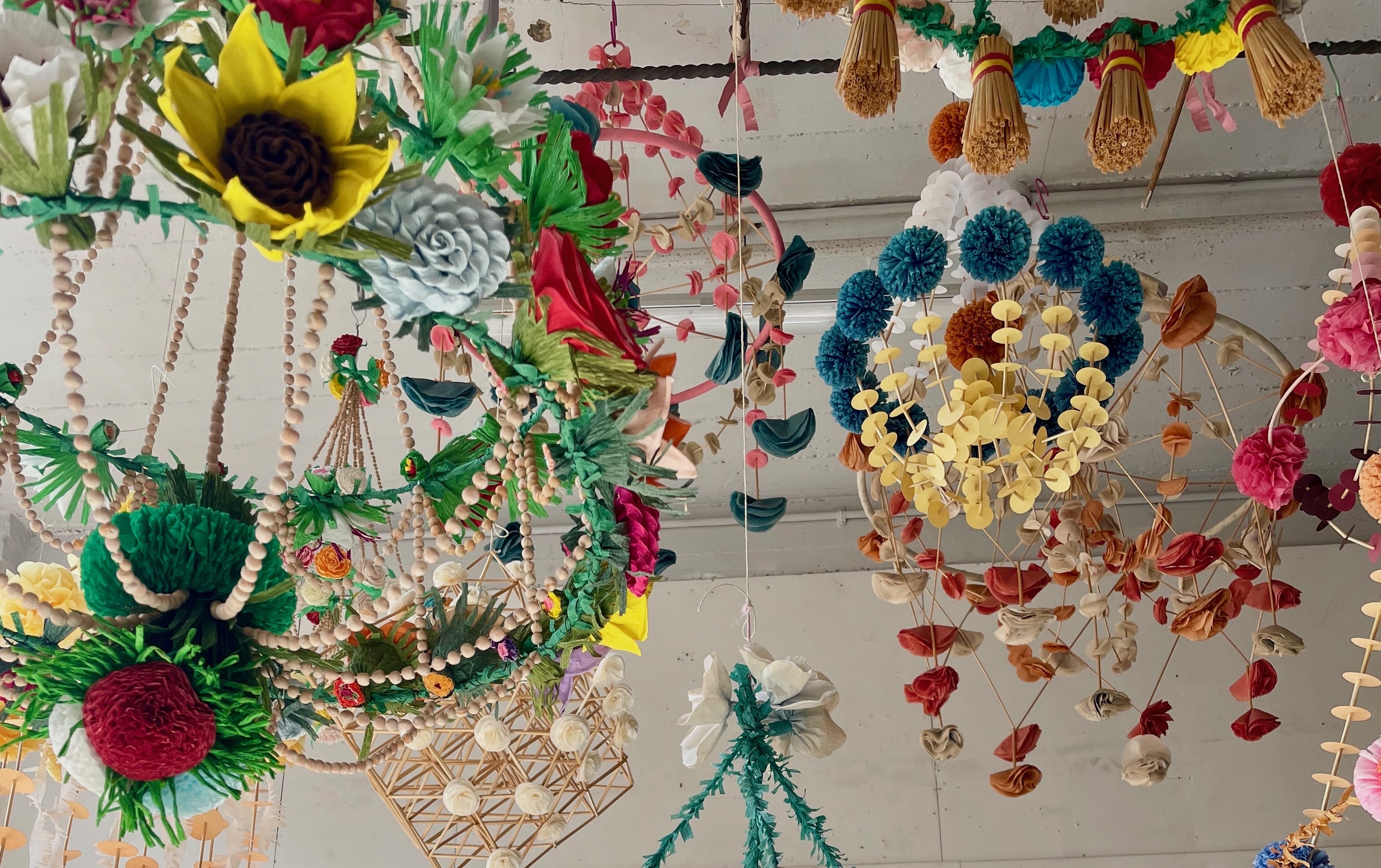Country houses for sale with great gardens
Potential buyers will see country houses at their best thanks to the summer's rain says Penny Churchill


Everything in the garden may not be rosy, but, thanks to our summer of endless rain, at least everything is green-and what a difference lush lawns and well-trimmed hedges make to an autumn garden. For Caroline Wagg, vendor of the delightful Old Rectory at Tunworth, near Basingstoke, Hampshire -launched in this week's Country Life at a guide price of £4.5 million through Chesterton Humberts (020-7594 4746)-there is a wonderfully ‘reposeful' quality about the gardens created by her late mother, where green is the predominant colour. Mrs Wagg and her husband, Jeremy, know a thing or two about gardens. Not only has Mrs Wagg inherited her mother's green fingers, but, in 1926, her husband's great-aunt, Eliza Wagg, a trustee of The Queen's Nursing Institute, came up with the idea of raising funds for her charity by persuading owners of private gardens to open them to the public. Thus, the National Gardens Scheme was born and, until a few years ago, the formal gardens of Tunworth Old Rectory were open to the public under the scheme.
The Old Rectory, listed Grade II, which dates from the 11th century and is mentioned in Domesday, has had only three owners since it was first built as the priest's house to the nearby village church. It was substantially altered in the early 18th century, and again in Victorian times, before being sold by the Church in 1917. The new owner was Yorkshire landowner Percy Bullivant, who brought with him four fine Adam fireplaces, which were installed in the Old Rectory's four main reception rooms. He also commissioned grand plans for the gardens, including the creation of a walled garden, but these were never implemented.
In 1952, Bullivant sold the house to Mrs Wagg's father, Col the Hon Julian Berry, youngest son of William Berry, 1st Viscount Camrose, owner of The Daily Telegraph and nearby Hackwood Park. The core of the house is medieval and includes the present dining room and sitting room. The rest is mainly Queen Anne and includes the drawing room, study, family room, kitchen/breakfast room, seven bedrooms and five bath/ shower rooms. The rear of the house and the stable yard are Victorian additions. Mrs Berry loved decorating and her light touch is evident in the colours of the drawing room, which she opened up by adding full-height French windows leading to the gardens. After her husband's death in 1988, she added the porch and the orangery, which looks out across the rear gardens to the lime avenue, and the surrounding Herriard estate.
All the main rooms in the house face south. The Old Rectory's 27 acres include gardens, grounds, woodland, an orchard and a paddock. Further accommodation is provided by two cottages, and courtyard and stable flats. The gardens at Tunworth were all Mrs Berry's creation, except for the Ruby Wedding garden, which was laid out on the former tennis court with help from the late Rosemary Verey. Sweeping lawns are interspersed with a remarkable collection of mature specimen trees and a series of herbaceous borders and flowerbeds. Focal points are the rectangular garden pond and the formal yew hedge garden, outlined by stone balustrading salvaged from the old Knightsbridge barracks, the ceremonial home of the Household Cavalry, where Col Berry served as commanding officer.

The Old Rectory at Tunworth, in Hampshire
Topiary, yew hedging, woodland walks and magnificent magnolias are features of the gardens at historic Mottynsden Manor, near Burwash, East Sussex, which has been launched on the market by Savills (01580 720161) at a guide price of £3m. For years, its owners, Tony and Susan Wadsworth, had looked enviously down from their weekend country cottage onto the pretty brick-and-tile manor house with its magnificent setting and far-reaching views, so when, in 2003, it came up for sale, they seized the opportunity to buy it. The earliest mention of the ancient manor of Mottingsden appears in 1322, when it was held by the Norman John de Motyn. The present part-timber framed house, listed Grade II, dates from the 17th century with later additions and, following substantial renovation, has 4,856sq ft of accommodation, including four reception rooms, a kitchen/breakfast room, an office/playroom, a large, airy master suite, six more bedrooms and three bath/shower rooms.
The garden is Mrs Wadsworth's domain, with topiary (‘two ducks, two poodles and an owl on a book') her area of special expertise. She has also carried out extensive planting within the 10 acres of garden and woodland, establishing new flowerbeds and nursing a giant sequoia and those precious magnolias. The heated swimming pool and the smart American barn stabling already existed, but the Wadsworths have added a new hard tennis court, and also restored the office/workshop building, which has planning consent for full-scale residential conversion, if required.
Sign up for the Country Life Newsletter
Exquisite houses, the beauty of Nature, and how to get the most from your life, straight to your inbox.
* Subscribe to Country Life and save £1 per issue
In 1999, when Edward Rook of Knight Frank (01732 744477) last presided over the sale of Grade II*-listed Squerryes Lodge at Westerham, Kent, all bar one of the 23 people who viewed it wanted to buy. This time round, Mr Rook is confident of an equally positive outcome to last week's launch, at a guide price of £4.5m, of this impressive, 10-bedroom house which sits, twixt town and country, in an idyllic riverside setting on the edge of Westerham village. Its listing identifies Squerryes Lodge as a ‘13th-century stone building, probably of monastic origin with considerable later additions, mostly of the late 17th century'. It became the manor of the rectory of Westerham when the manor of Westerham was divided into two in 1287, and was then granted to Christ Church Priory, Canterbury.
Whatever its origins, the western and southern parts of the house, which contain the main reception rooms, are typically Georgian-the drawing room and sitting room being particularly splendid, with high ceilings, period fireplaces and large sash windows. Green is the dominant colour of the gardens where the feeling of tranquillity is enhanced by the swirl of the River Darent flowing through the grounds, and the constant sound of the weir. The six acres or so of gardens, mainly laid to lawn and surrounded by an array of mature trees and shrubs, include a tennis court, a croquet lawn, woodland and two paddocks. Outbuildings include garaging, garden stores, a barn and stabling for four horses.
The green credentials of The Red House at Petham (pictured on homepage), near Canterbury, Kent, currently for sale through Chesterton Humberts (01227 452780) at a guide price of ‘offers over £1.575m' are also there for all to see. Built in 1910 as a dower house to the Baker White family's Street End estate, the elegant, six-bedroom Edwardian house was bought in 1947 by the Canney family, the current vendors.
Set in eight acres of formal landscaped garden, paddocks and woodland, The Red House -which, incidentally, has no connection with William Morris's house of the same name at Bexley, Kent-was the happy childhood home of Elizabeth Cox (née Canney), who swept the boards with her mother's champion show pony, Arden Flower, in the early 1960s. She later graced the frontispiece page of Country Life in February 1973, before celebrating her marriage on the lawn of The Red House. The same green lawn was the setting for the wedding of her son, Andrew, a few weeks ago.
* Follow Country Life Property on Twitter
Country Life is unlike any other magazine: the only glossy weekly on the newsstand and the only magazine that has been guest-edited by HRH The King not once, but twice. It is a celebration of modern rural life and all its diverse joys and pleasures — that was first published in Queen Victoria's Diamond Jubilee year. Our eclectic mixture of witty and informative content — from the most up-to-date property news and commentary and a coveted glimpse inside some of the UK's best houses and gardens, to gardening, the arts and interior design, written by experts in their field — still cannot be found in print or online, anywhere else.
-
 Burberry, Jess Wheeler and The Courtauld: Everything you need to know about London Craft Week 2025
Burberry, Jess Wheeler and The Courtauld: Everything you need to know about London Craft Week 2025With more than 400 exhibits and events dotted around the capital, and everything from dollshouse's to tutu making, there is something for everyone at the festival, which runs from May 12-18.
By Lotte Brundle Published
-
 Everything you need to know about private jet travel and 10 rules to fly by
Everything you need to know about private jet travel and 10 rules to fly byDespite the monetary and environmental cost, the UK can now claim to be the private jet capital of Europe.
By Simon Mills Published
